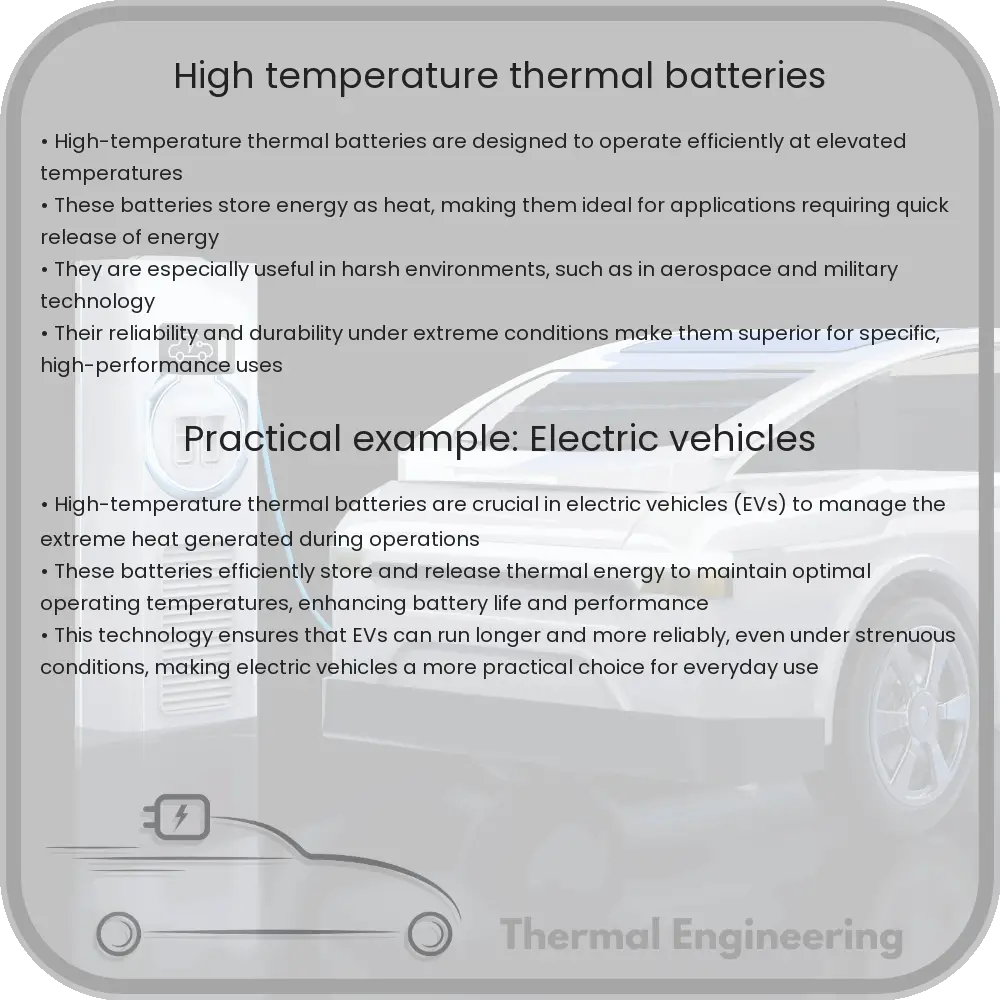Explore the fundamentals and applications of high-temperature thermal batteries, designed for use in extreme environments.

Understanding High-Temperature Thermal Batteries
High-temperature thermal batteries are a specialized type of battery designed to operate effectively at elevated temperatures. These batteries are primarily used in applications where traditional battery technologies fail due to environmental conditions, such as in aerospace, military, and deep-well drilling industries.
Components and Operation
The key components of high-temperature thermal batteries include an electrolyte, anode, and cathode, similar to conventional batteries. However, these components are uniquely suited to withstand and operate under high temperatures. The electrolyte is typically made from a molten salt, which remains solid at room temperature and becomes ionically conductive when heated above its melting point.
The most common anode material used in these batteries is lithium, known for its high electrochemical potential. The cathode is usually composed of a metal oxide, such as iron sulfide (FeS) or cobalt disulfide (CoS2). When the battery is activated—often by a heat source—the electrolyte melts, allowing ions to flow between the cathode and anode, generating an electrical current.
Advantages of High-Temperature Thermal Batteries
- Thermal Stability: These batteries are capable of operating in extremely high temperatures where conventional batteries would degrade or fail.
- Energy Density: They posses a high energy density, making them suitable for applications where space and weight are critical factors.
- Long Shelf Life: Since the electrolyte in a thermal battery remains solid under normal conditions, these batteries can be stored for long periods without significant degradation.
- Rapid Activation: High-temperature thermal batteries can be activated very quickly, providing power nearly instantaneously when exposed to the trigger temperature.
Applications
Due to their unique characteristics, high-temperature thermal batteries are employed in various demanding applications:
- Aerospace and Avionics: Used in missile guidance systems where high temperatures are generated during flight.
- Military Technology: Employed in applications like emergency radio communication systems, which may need to operate in harsh environments.
- Oil and Gas Industry: Utilized in downhole drilling tools that experience high temperatures deep within the Earth’s crust.
Challenges and Future Outlook
While high-temperature thermal batteries offer significant advantages, their widespread adoption is hindered by costs and the challenging manufacturing processes associated with high-temperature materials. Advances in materials science may reduce these barriers, enhancing their feasibility for broader applications.
As technology progresses, the demand for reliable power sources in extreme conditions is expected to grow, potentially increasing the role of high-temperature thermal batteries in future energy systems.
Ultimately, understanding the principles and advancements in high-temperature thermal battery technology emphasizes their importance in modern engineering solutions and their potential to expand into new markets and applications.